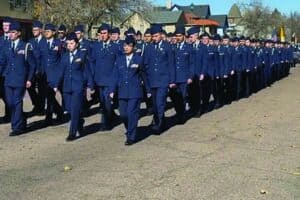This month, we’ll take a close look at the design of birds, and reveal facts that will make you appreciate birds even more.Most, if not all of you, have probably seen a hummingbird at one time or another. Between three and four inches long, depending on the species, and weighing only a little more than a tenth of an ounce, these diminutive birds seem almost more like insects than birds. Yet, some fly round trip from South America to Canada and back every year. The Ruby-Throated Hummingbird of the eastern part of the country makes a non-stop flight across the Gulf of Mexico twice a year.Obviously, these tiny-feathered creatures must have an incredible design in order to accomplish a feat like that. Let’s explore them.First, birds are aerodynamic. Their streamlined body shape and perfectly designed wings enable them to travel expansive distances. We can see the difference in avian designs as we examine different species of birds.Quail, which do not migrate, have short, blunt wings that allow them to climb away from the ground quickly in order to get away from predators, but are useless for long distance. On the other end of the spectrum are the falcons and swallows, which spend most of their life in the air, and have torpedo-shaped bodies and long pointed wings, allowing them to travel at high speeds in pursuit of prey or during long migrations.Also included in the long-distance group are hawks and other soaring birds, which rely on thermals to travel, and by instinct they know where to find the best thermals. The wings on all birds are attached to large breast muscles, which in turn are attached to a large keel bone. These muscles are extremely powerful and enable the pigeon to travel at 56 mph, or the Peregrine Falcon to dive at 200 mph. Some birds, such as albatrosses, even have a locking mechanism that holds their wings open during long hours of soaring at sea, without having to use much muscle power.The second noteworthy aspect is the bird’s respiratory system. Birds like geese fly at extremely high altitudes – higher than humans can easily breathe without assistance. In order to do this, birds have a much higher hemoglobin count than mammals or people, which enables them to extract more oxygen from the air. In addition, the flapping of the wings in flight aids breathing, acting as bellows, which help suck air in and out of the lungs. Raptors have a raised bump inside their nostrils to break the airflow during high-speed dives after prey.Obviously, birds are well designed, and I will reveal more of these interesting, and at times, amazing facts in next month’s article.






